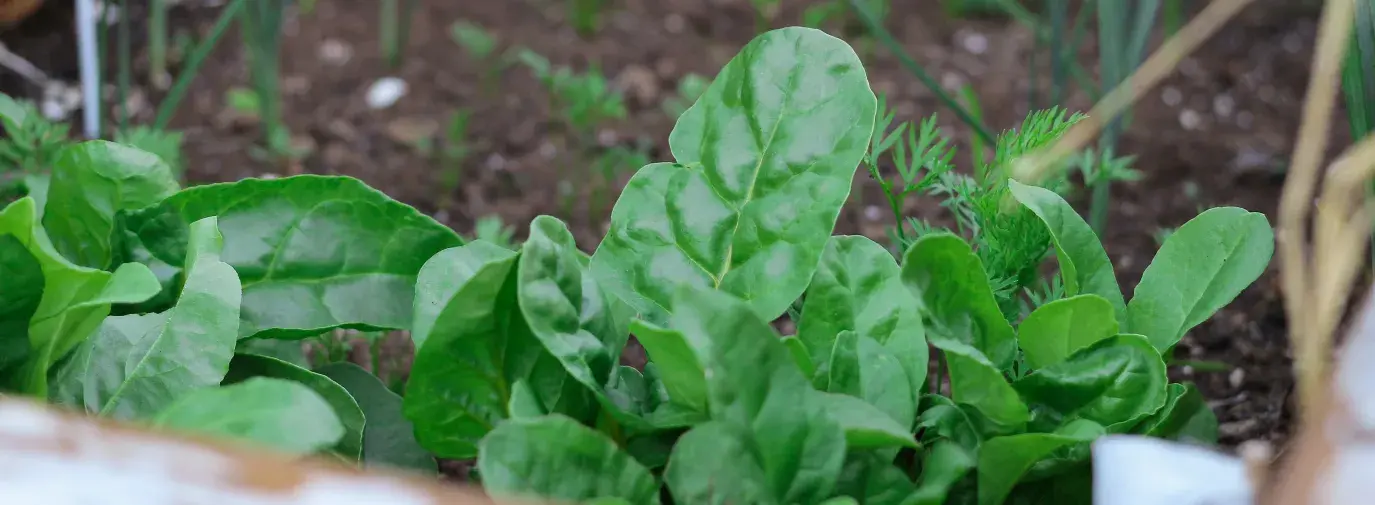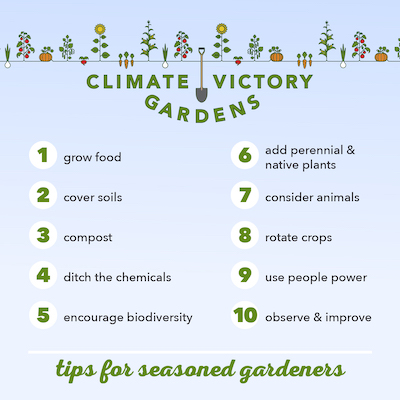
Your garden has the power to be part of the climate solution as a Climate Victory Garden.
As an environmentally-conscious gardener, you can adopt gardening practices that protect the soil—this is where we’re storing carbon—while minimizing climate impacts beyond the boundaries of your garden. For example, when you skip store-bought synthetic chemicals, you’re protecting the life in your soil and its ability to capture carbon, as well as avoiding the emissions associated with the production and transportation of these products.
The good news is that if you're new to gardening, these Climate Victory Gardening practices are easy to adopt. If you're already a seasoned gardener, chances are you’re probably already doing some of these practices. All gardens are going to look different, and these Climate Victory Gardening practices are intended to inform the hundreds or even thousands of decisions you make in your garden each season. Whether you’re a beginner or seasoned gardener, there’s something for everyone.

5 Beginner Gardening Practices
Grow food
- Here's how: plant your favorite foods, share with your neighbors
- Why it's important: reduces food miles, decreases grocery bills, encourages seasonal eating, establishes a close relationship with food
Cover soils
- Here's how: apply mulch, leave plant residues, plant cover crops, strategically allow weeds
- Why it's important: decreases water use, curbs erosion, and protects local water sources
Compost
- Here's how: compost kitchen and yard wastes, apply compost as fertilizer, share with your neighbors
- Why it's important: repurposes waste, reduces methane (a greenhouse gas) from landfills, and increases quality of soil and nutrient density of foods
Ditch the chemicals
- Here's how: fertilize with compost, plant companion crops, use integrated pest management
- Why it's important: decreases pollution from production to run off, reduces input costs, ensures your safety
Encourage biodiversity
- Here's how: grow many different plants, feed soil life with compost, plant pollinator habitats
- Why it's important: ensures healthy soils and nutritious foods, balances ecosystems, and keeps pests in check
Your beginner gardening questions are answered here.

5 More Gardening Practices
Add perennials & native plants
- Here's how: reduce disturbance of soil, plant trees, choose perennial grasses, shrubs, and herbs
- Why it's important: allows for multiple harvests from a single planting, protects garden from the elements, promotes diversity, and controls weeds
Consider animals
- Here's how: allow chickens, goats, and other small animals to forage for insects or eliminate weeds
- Why it's important: decreases pests and increases fertilization naturally
Rotate crops
- Here's how: choose different crops and new locations each season, consider nitrogen fixing plants
- Why it's important: ensures balanced soil nutrients and keeps pests to a minimum, reducing chemical input use
Use people power
- Here's how: hand-pull weeds, rake instead of using blowers, choose push mowers over gas powered, and bike to your garden or market
- Why it's important: reduces dependency on fuel, decreases emissions and costs
Observe and Improve
- Here's how: test soil for nutrients, monitor moisture, and remove pests and diseased plants quickly
- Why it's important: determines how water, inputs, and other management can be applied most efficiently
Your seasoned gardening questions are answered here.
Have questions about how to do any of these? Check out our resource pages for more info. These gardening practices also have tangible climate benefits. Your garden can support the environment, so consider adding yours to the Climate Victory Garden map!






